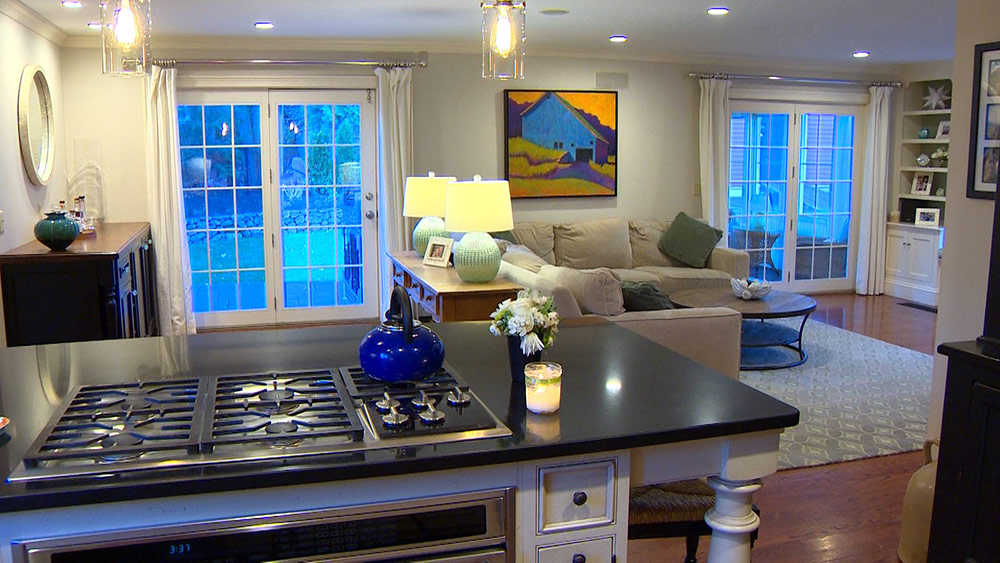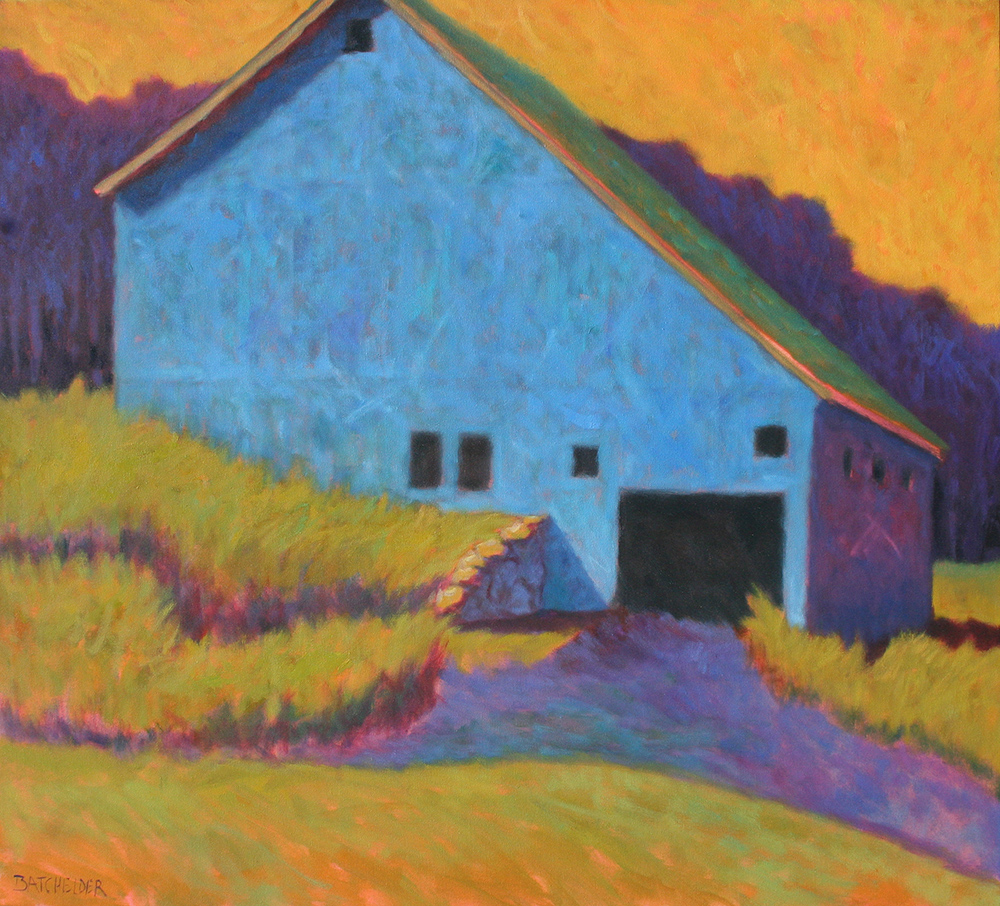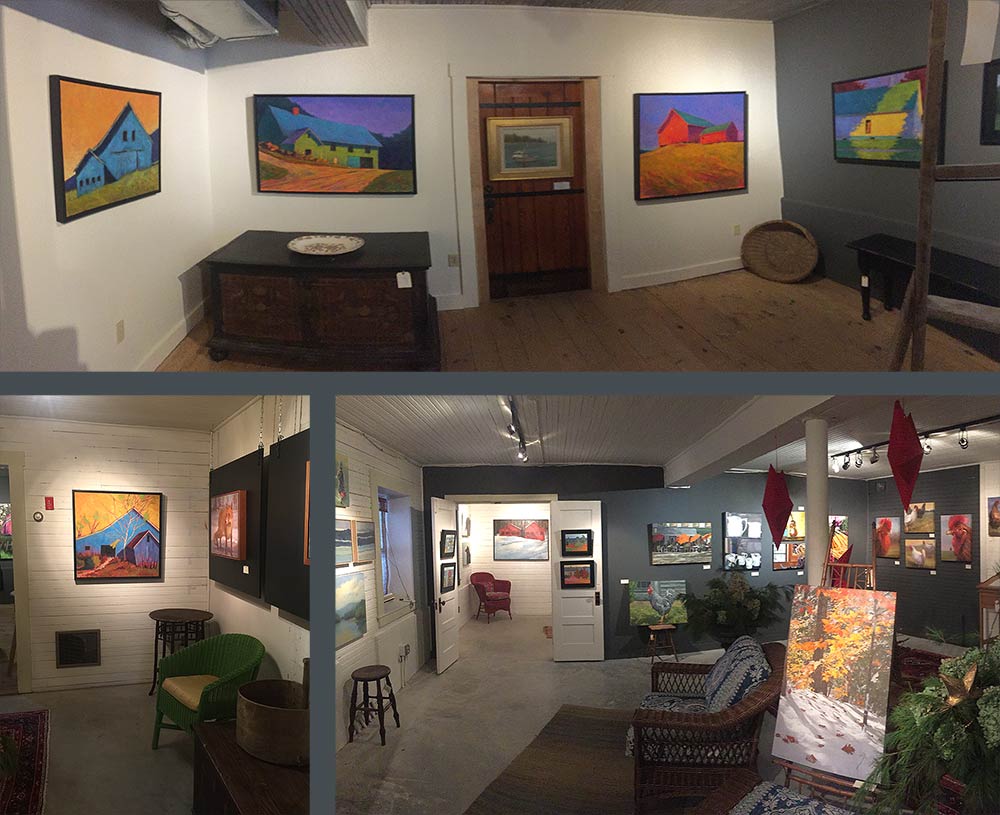“Meadow Bound” | Private Residence, New Britain, CT
36 x 32 limited edition Giclee canvas print

 Received a couple of flattering emails this week that a piece sold a while ago, “Summer Blue” was spotted on this week’s edition of “Chronicle.” A friend kindly shared the link and a photo, which is shared here. You never know where a piece may end up once it’s released to a gallery, and sold. In the case of this piece, and this home in Concord, MA, it seems a perfect fit. To view the episode, click here.
Received a couple of flattering emails this week that a piece sold a while ago, “Summer Blue” was spotted on this week’s edition of “Chronicle.” A friend kindly shared the link and a photo, which is shared here. You never know where a piece may end up once it’s released to a gallery, and sold. In the case of this piece, and this home in Concord, MA, it seems a perfect fit. To view the episode, click here.
I often think of the answer given to me, years ago in art school, when I asked a painting instructor the rookie question, “when do you know when a painting is done?” The teacher–an older, wiser, slightly eccentric guy–didn’t hesitate with his reply. “When you can’t paint anymore.”
 Seemed like a flimsy, artsy answer at the time, but over time, I’ve grown to understand.
Seemed like a flimsy, artsy answer at the time, but over time, I’ve grown to understand.
From the time you make the first mark, to any point in the process after that, the painting can be “done” at anytime. When starting a piece, like the one here, the beginning (for me) is a loose, sloppy exercise in getting the idea down. Everything after this stage is pushing the boundaries of completion. In my own work, the more I paint, the less I feel I “have” to paint, to finish a piece. Getting the desired color, composition, shadow, etc., to achieve the desired outcome is a process of pushing forward while simultaneously being ready and willing to stop.
On a recent trip to the Lake Sunapee region of New Hampshire, I got talking to a longtime resident of the area, and asked if he was originally from here, and was told he’d only been a resident since the mid ’70s, originally from Connecticut. “Which, I guess,” he said, “makes me a Flatlander.”
There is a territorial quality to places like the hill towns and lake regions of New Hampshire, the Vineyard, Nantucket, and the Cape where, it seems, only birth and lifelong residency spares you of the slightly derogatory “Flatlander” label, or earns you the title of “Islander” or “Cape Codder.”
This piece, “Flatlanders” 48 x 36, embodies that spirit of being in the same place your entire life, a time frame necessary to either earn, or avoid, colloquial labels.
There’s a time of year, late Summer to early Fall, when local farms mow their meadows and fields, providing hay for cattle and horses. As a child, the hill behind my house was mowed each year, with now antique equipment that spat out square blocks of hay my brothers and I would quickly gather to build forts and shelters to play in, until the farmer came back, picking up all the bales. That hill is now forest, as are many of the old meadows of New England. But those that remain, still go through this summer-ending ritual.
This piece, “Last Bale”, 30 x 24, of a local farm in Wilton, NH, captures the simplicity of the landscape following the baling and harvest, and in this case, of a single bale-for some reason-left behind.
There is a uniqueness to the light of high places. Being above everything else, light hits hilltops first in the morning, and last in the evening. I grew up in a house located at the highest point in town, and noticed this light, just as I was aware of the absence of it when living in Vermont’s Mad River valley, tucked down between two mountains, where we were the last to see sunrise and sunset.
In this piece, “Upland Light”, 24 x 16, the light of early morning illuminates things, amplifying shaded areas with an ambient glow caused by the low angle of the sun, casting long shadows and varying degrees of brightness between foreground and background.
The simplicity of the rural landscape, and the slowly receding and obscured architecture of the region’s farming past, is present everywhere throughout New England, but often hidden down dirt roads, off the main routes. This small piece, “Windsor” 12 x 12, is of a scene encountered in central Vermont, in the middle of a hillside meadow, with no sign of the farm it must once have been a part of.
“Farm Wall” | 36 x 36 | oil on canvas
The meadows and fields of New England are crisscrossed with literally hundreds of thousands of miles of stone walls, many now obscured by overgrowth and woods. They are fascinating structures when you really think about them, and get up close enough to see exactly how difficult it must have been to build these without modern machinery.
In Farm Wall, my neighbor’s farm is divided by this wall, once separating the lower sheep meadow with the higher one, where my house currently sits, the land having been sold off years ago. And beyond the woods in the background, more walls (miles of them) wind through the woods, down to the kettle pond, where they disappear into the shoreline.
Just completed 24 x 24, “Coveside”, based on Yarmouth, Cape Cod, coastal cottage.

I’m very pleased to have been invited to participate in a new venture through the Prospect Hill Antiques at Lake Sunapee, NH–The Gallery at Prospect Hill, which features many well-known local and regional artists.
This impressive new gallery occupies three restored, rustic rooms on the main floor of the barn known by many locals and lake-home owners as the premiere antique destination in the Lakes Region.
To learn more about Prospect Hill Antiques, follow this link. A new website will, in the near future, showcase the new gallery space and the established and expansive antiques offerings.